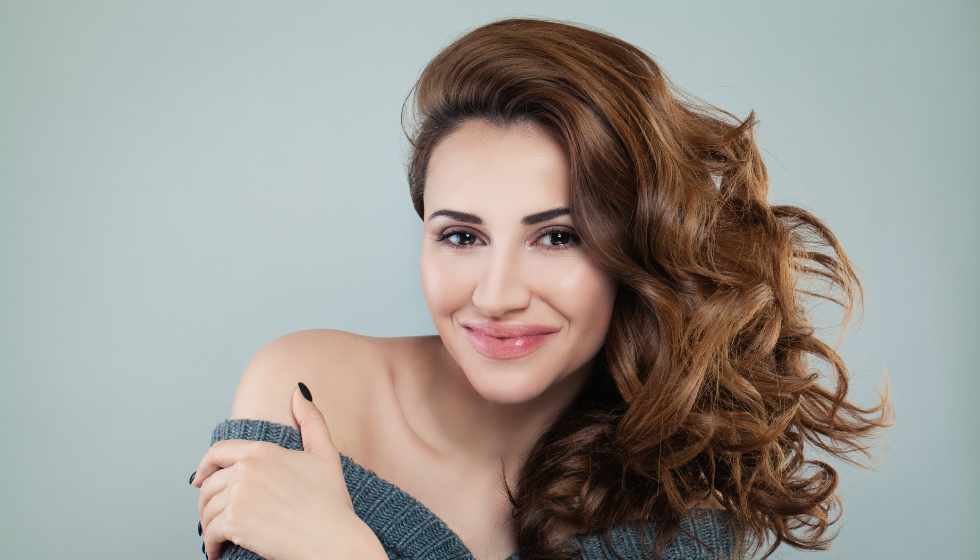Carving is an alternative to the classic perm but with a similar result. The main difference between them is the time of wearing the hairstyle. Carving keeps on the hair from a month to three. On the one hand, this is not very convenient, since the procedure will have to be repeated; on the other hand, carving is a great option for those who want to try curls for the first time and without much risk to the health of their hair.
What is Carving?
Carving is a long-term hair curling, thanks to which light curls are formed and give extra volume to the hairstyle. It is made for short and long strands, and the process is similar to the classic perm in many ways. The desired effect is achieved with special compounds impregnating the strands and winding curlers of a certain diameter and relief.
However, the result of the procedures, as well as the subsequent care, varies. Carving is more of a styling base, after which you will have to work with a hairdryer with a diffuser and styling fixers to complete the look, explains Konstantin Degtyarev.
What is the difference between carving and perm?
In the classic long-term styling, which can last up to six months, acid or alkaline mixtures are used, almost completely destroying the existing hair structure and then fixing it in a new form. For carving, compounds with polymer molecules are used that do not penetrate deep into the hair but act superficially. They create new connections, thanks to which the hair becomes more voluminous, but at the same time retains its structure and elasticity, says Konstantin Degtyarev.
How carving differs from biowave
The basis of biowave is natural substances or their analogs, as close as possible to the structure of a human hair. Additionally, biowave complexes are enriched with moisturizing and conditioning components. The biowave is kept in different ways but, on average, for at least three months. Unlike carving, which works more on volume, wave allows you to form curls of varying intensity and elasticity.
Pros and cons of carving
Even though carving is suitable for almost any type of hair, it has several features. Here are some of the pros and cons of carving to consider before the procedure.
Advantages of carving
Natural result. Curls from carving do not look heavily curled and tense, as in classic chemistry. As a rule, these are light waves, most reminiscent of natural curly strands.
Gentle composition. Carving is safer for hair when compared to a traditional six-month perm but may be inferior to a wave in terms of nutrients in the composition.
Retains length. Carving does not eat up the total length of the hair. After curling, the strands do not shrink into elastic curls, so there is no significant loss in length.
Easy care. After carving, there is no need to change daily care and all hair cosmetics radically. If desired, the strands can even be straightened with an iron, but they will again become wavy after washing your hair.
Cons of carving
Short-lasting effect. Carving does not last long. If you wash your hair often, go to the pool, or immediately go on vacation to the sea, the volume and curls can disappear in a month.
Not suitable for severely damaged hair. Despite the more gentle composition, stylists do not advise any perms on severely damaged hair.
Incompatible with staining. Like any other perm, carving cannot be done on the same day as hair lightening. This way, you can avoid losing or distorting the lightning effect. If there is a desire to change the tone after carving, then pausing between procedures for at least a week is better.
Possible irritation. Before the procedure, checking for an allergic reaction is important to exclude negative consequences. If there are wounds, severe scratching, or other problems on the scalp, then it is better to postpone the procedure until complete recovery.
Individual restrictions. Women during pregnancy or lactation should consult a doctor.
Types of carving
The final result of carving depends on the initial length of the hair and the winding method. At the client’s request, the master can emphasize only the tips and individual strands or work along the entire length. Depending on the shape and size of the curler, curls will vary from pronounced to light.
Curl size carving
Large. Looks advantageous on long hair, creating a wave effect from roots to ends. Large curls will help correct facial features at medium length, making them more elongated.
Average. Ideal for those who are trying a perm for the first time. Such curls will look natural and can be made at almost any length.
Small. Suitable for both short and long hair. But in the latter case, you need to be prepared because the curls will not last long, especially if the hair is initially dense and thick.
Carving on different lengths of hair
Curls look equally good at any length. Moreover, not only women but also men can curl their hair. Carving lasts relatively short and will not turn hair into tight afro curls. This is a great option for those who want to try curling for the first time.
Carving on short hair
Pixie and bob haircuts are ideal contenders for carving. This is especially true for owners of thin hair that does not keep its shape and basal volume. A perm will not only make the hairstyle thicker but also simplify the life of its owner. It is not necessary to lay carving on short hair.
How carving is done
There is no fundamental difference in the sequence of actions during carving, biowave, and ordinary chemistry. In its most general form, carving is performed as follows.
- Hair preparation. The hair is cleaned with a special shampoo for deep cleaning.
- Cheat. The strands are wound on large bobbins.
- Application means for carving. The activating agent is applied to the hair. The exposure time depends on the structure of the hair and the desired result. Usually, it reaches 20 minutes after the hair is thoroughly washed with water until chemical residues are completely removed.
- Fixer. A product is applied over the hair that stabilizes the keratin structure of the hair and fixes the result, making the curls elastic and resistant. Aged 5-10 minutes.
- Promotion. The bobbins are removed (without stretching the curls), the hair is washed with water, and a neutralizer is applied.
- Laying. After these steps, you can start creating any styling.
After carving, the hair needs special moisturizing care to maintain the procedure results and prevent damage to the hair. Also, according to experts, you must refrain from washing your hair for at least 48 hours after the procedure.


